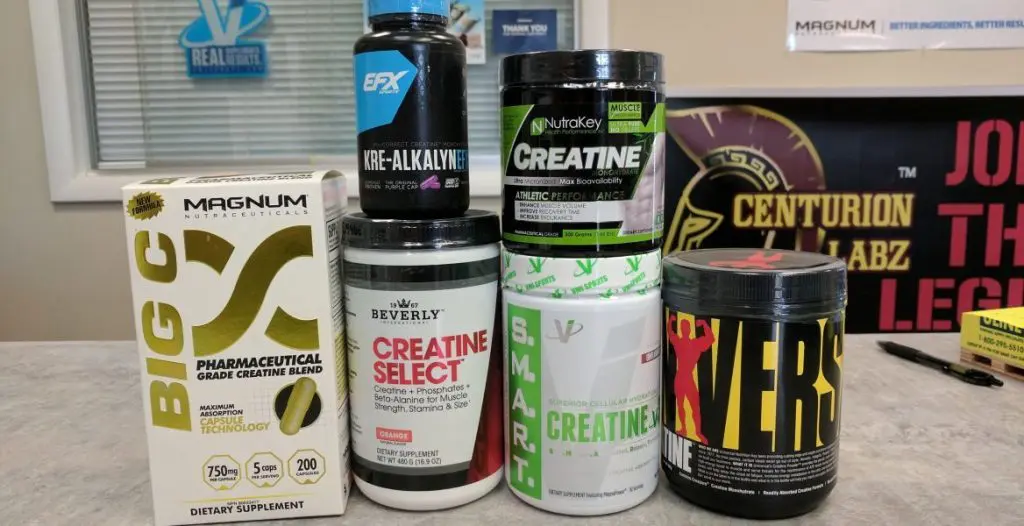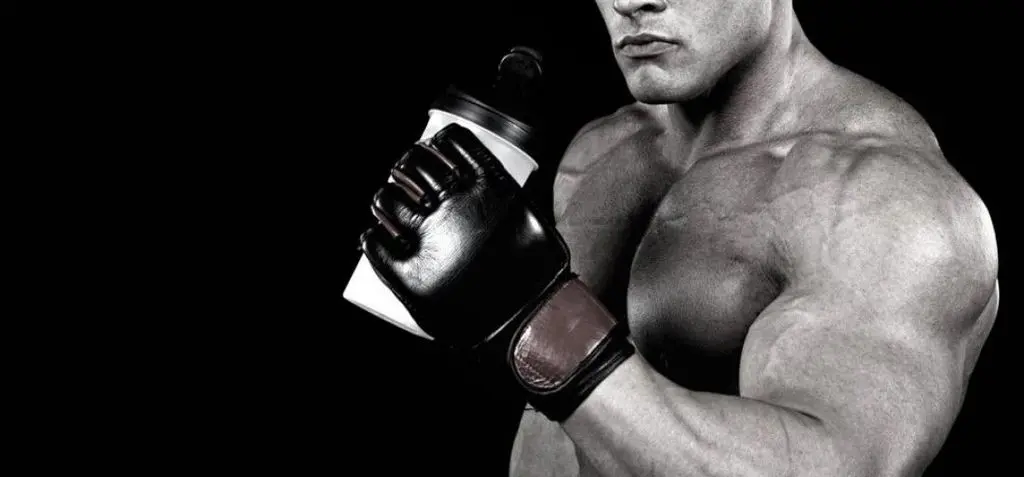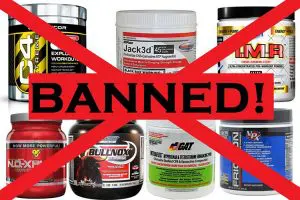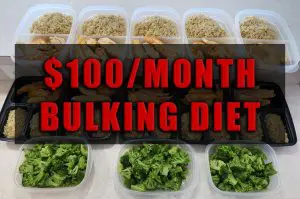In the age of the internet, anyone and everyone can give out advice on supplements—and they do. A simple google search will show that there’s dozens of other “experts” and “gurus” telling you completely bogus myths about supplements like creatine, whey protein, and testosterone boosters.
Bodybuilding isn’t just an art, though—it’s a science. Everything we do can be scientifically verified. So in times like this, where anyone and everyone with a platform is recommending something different, it’s important we turn to science when asking questions like:
- What is creatine?
- What type of creatine is best?
- What are the benefits of taking creatine?
- When do you take creatine?
- What are the creatine side effects?
It turns out that most of these questions have been answered through extensive research, and although taking creatine won’t make you put on 50 pounds of muscle overnight, it’s certainly a very powerful supplement to add to your regimen. So with that in mind, here’s my crash course on creatine.
What is Creatine?
With the natural bodybuilding movement rising more and more each day, many athletes and weightlifters are concerned with what they’re putting into their body. They want it all to be completely organic, non-GMO, and a whole host of other things. Well, it turns out that creatine is actually completely natural.
Creatine is a molecule that’s found naturally in muscle cells—in fact, up to 95% of your body’s creatine stores are in your muscles, in the form of phosphocreatine, a more bio-available and rapidly usable form of creatine. The remaining 5% is stored in your brain, kidneys, and liver.
It’s produced naturally by your body, and has an enormous amount of benefits from enhancing strength and increasing endurance, to even upgrading brain function. The greatest benefit of creatine however, is its ability to enhance ATP production—the master energy molecule of the body.
This is why so many athletes supplement with creatine, and it’s why it’s potentially one of the most powerful supplements that you can get legally. Supplementing with creatine literally enhances your body’s ability to produce energy, which has a wide range of applications from staying more focused to lifting more weight.
What Type of Creatine is Best?
Science has shown us that creatine is perhaps the closest thing you can get to legal steroids, but the question remains: what type of creatine is best for optimal performance? So far, three types of creatine have been invented, with proponents of each claiming different benefits.
First, there’s good old creatine monohydrate—this has been around the longest, and has the largest body of research to support it. Then, there’s buffered creatine, which contains an alkaline powder meant to improve the digestibility of it, thus minimizing side effects.
Lastly, there’s creatine hydrochloride, which is designed to avoid the common “muscle bloating” that happens when you take creatine. So which is best? Well, creatine monohydrate is by far the most researched and studied form, and is widely regarded as the safest and most effective kind of creatine.
So the next time you’re browsing around at your local GNC looking for supplements to build muscle, consider bypassing all of that overly hyped, fancy new stuff that the salesperson is convincing you to buy. Instead just get a bulk supply of good, old-fashioned creatine monohydrate, and you’ll be just fine.
Benefits of Taking Creatine
The benefits of taking creatine are widely recognized by both bro-scientists and PhD’s alike. In fact, no other supplement has been so rigorously tested, researched, and experimented upon more than creatine monohydrate—but we’ll get into that specific form of creatine later.
One of the many well known benefits of creatine is its ability to enhance strength. In fact, according to one study conducted by researchers at Penn State University, found that 12 weeks of creatine supplementation increased muscle fiber growth by 2-3x more than weight training alone:
“After 12 wk, significant (P < or = 0.05) increases in body mass and fat-free mass were greater in creatine (6.3% and 6.3%, respectively) than placebo (3.6% and 3.1%, respectively) subjects. After 12 wk, increases in bench press and squat were greater in creatine (24% and 32%, respectively) than placebo (16% and 24%, respectively) subjects. Compared with placebo subjects, creatine subjects demonstrated significantly greater increases in Type I (35% vs 11%), IIA (36% vs 15%), and IIAB (35% vs 6%) muscle fiber cross-sectional areas. Muscle total creatine concentrations were unchanged in placebo subjects. Muscle creatine was significantly elevated after 1 wk in creatine subjects (22%), and values remained significantly greater than placebo subjects after 12 wk. Average volume lifted in the bench press during training was significantly greater in creatine subjects during weeks 5-8. No negative side effects to the supplementation were reported.”
As if this weren’t enough, creatine has a whole host of other benefits such as increasing testosterone, increasing endurance, enhancing cognitive function, and speeding up the recovery process. It’s no wonder that bodybuilders supplement with the stuff so often—but just how much do they take?
How to Take Creatine
The most widely agreed upon dosage for creatine monohydrate is 5 grams taken before or after a workout. Some bodybuilders, such as Jay Cutler and Ronnie Coleman, take 5 grams of creatine both before AND after a workout to not only provide their muscles with enough beforehand, but to replenish their stores afterwards.
Other types of creatine, such as creatine hydrochloride, claim to be effective at doses as low as 2.5 grams, although there isn’t a significant body of research to back these claims up. For the most part, bodybuilders agree that taking five grams of creatine a day is enough to get all of the benefits with none of the side effects.
Now, when to take creatine? For optimal absorption, it’s recommended that you take five grams of creatine monohydrate with fruit juice directly after your workout. This boosts insulin levels, which helps shuttle the creatine molecules into your muscles for faster replenishing of the stores.
Alternatively if you’re diabetic or prone to diabetes, you can take creatine with a complex carbohydrate meal. It’s important that you take it with an insulin spiking meal in order to increase bio-availability, but if you have to take it without a meal every now and then don’t sweat it.
Creatine Loading
If you’ve been doing your research, you’ll likely have stumbled upon something known as a “creatine loading phase.” The idea behind this is that you need to pump your muscles up full of creatine to hit a maximum threshold, and then after this you can take five grams a day to simply maintain that optimal level.
There is certainly some truth to this, although loading isn’t necessary. Proponents of loading advocate that users consume 25 grams of creatine per day for a week, split up into multiple doses spread throughout the day. Others say that it isn’t necessary—I tend to fall into this boat.
While it certainly won’t hurt you to load creatine monohydrate, I don’t believe it’s extremely necessary. For pro athletes and bodybuilders who are looking for every possible edge in their training, sure, go ahead and load—but if you’re just an average weightlifter, you probably don’t need to worry about it.
Other types of creatine, such as buffered creatine and creatine hydrochloride, supposedly don’t need to be loaded. Again however, there isn’t very much data out to support these claims seeing that they’re relatively new forms of creatine—so your best bet is to simply stick with good old monohydrate.
Creatine Side Effects
While there’s certainly a ton of phenomenal benefits to taking creatine monohydrate, there are some potential side effects to look out for. I’ve personally never had any side effects from taking creatine (aside from getting jacked as hell), but some people may be more prone to side effects than others.
The most common side effects of creatine consumption are nausea and stomach ache, although some report other issues such as:
- Mild bloating
- Stomach pain
- Nausea
- Muscle cramping
Those who have kidney diseases and are pregnant or breastfeeding should avoid creatine monohydrate. While it is produced naturally by the body, and side effects are very uncommon, doctors and biologists agree that it’s better to stay on the side of caution than to regret it later.
The majority of creatine side effects can be avoided by simply consuming a gallon of water a day, which funny enough is also great for melting away fat. This is why you always see those giant behemoth bodybuilders walking around with milk jugs filled up with water—it’s to avoid creatine side effects, and to stay optimally hydrated.
Creatine: The Bottom Line
In conclusion, creatine monohydrate is one of the most widely researched and praised supplements in all of the bodybuilding industry. It’s no surprise that even amateur weightlifters and high school athletes are turning to the stuff, in order to get every last bit of strength on their side as they can.
To get the most bang for your buck, creatine should be taken post-workout with a cup of fruit juice to ensure maximum bioavailability. While some individuals may need more than the recommended dosage of 5 grams per day, unless you’re an athlete under extreme stress, this dose should be just find.
There are some side effects to taking creatine, but in my experience they’re very unlikely. The vast majority of healthy individuals do not experience any adverse symptoms, and even the people who do report that they’re very mild, and typically only last for a few days during the loading phase.
All in all, creatine monohydrate is a very powerful supplement with almost no negative side effects. I recommend you avoid shopping for expensive, over priced brands such as those found at GNC and other supplement stores. My recommended brand is Optimum Nutrition—I’ve been using it for years, with no complains.
























I am a hard gainer. So post workout take with a cup of fruit juice along with my mutant mass shake? Or can I just put 5g in with my protein?
Not actually a creatine question but the photo at the beginning of this article made me think of it. What’s your opinion of Beverly Int products? Ever use any of their stuff?